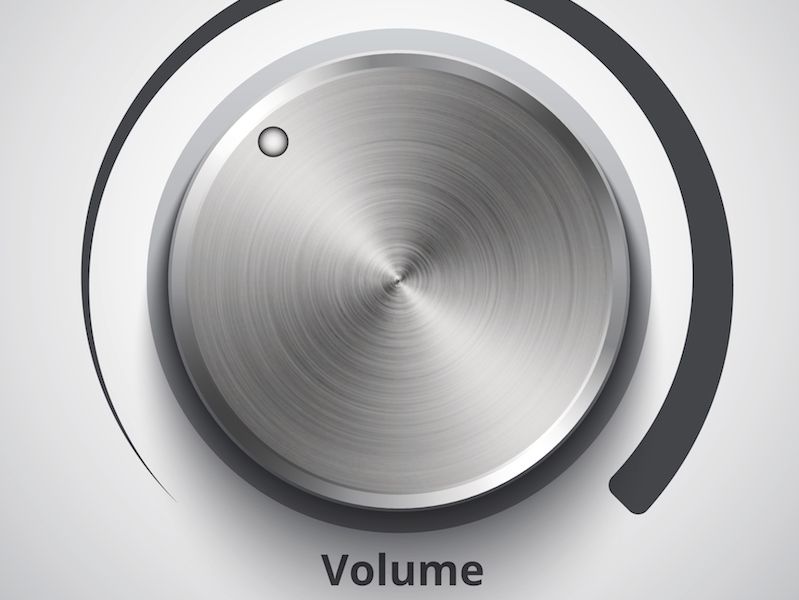
Have you ever gone to the beach and noticed one of those “Beware of Shark” warning signs? It’s easy to realize that you shouldn’t disregard a warning like that. You might even rethink swimming at all with a sign like that (if the warning is written in big red letters that’s especially true). Inexplicably, though, it’s harder for people to listen to warnings about their hearing in the same way.
Recent research has found that millions of individuals neglect warning signs when it comes to their hearing (there’s little doubt that this is a global concern, though these studies were exclusively carried out in the UK). Awareness is a big part of the issue. Being afraid of sharks is fairly intuitive. But fear of loud noise? And how do you recognize how loud is too loud?
We’re Surrounded by Hazardously Loud Sounds
It isn’t just the machine shop floor or rock concert that present dangers to your ears (not to minimize the hearing risks of these scenarios). There are potential hazards with many every-day sounds. That’s because it’s not just the volume of a sound that presents a danger; it’s also the duration. Your hearing can be injured with even low level noises like dense city traffic if you’re exposed to it for more than a couple of hours at a time.
Read on to find out when sound becomes too loud:
- 30 dB: Normal conversation would be at this sound level. At this level, there won’t be a limit to how long you can confidently be exposed.
- 80 – 85 dB: This is the volume of heavy traffic, lawn equipment, or an air conditioning unit. After around two hours this level of sound becomes harmful.
- 90 – 95 dB: A motorcycle is a good illustration of this sound level. This amount of exposure gets hazardous in as little as 50 minutes of exposure.
- 100 dB: An oncoming subway train or a mid-sized sporting event are at this volume (of course, this depends on the city). This volume can become dangerous after 15 minutes of exposure.
- 110 dB: Do you ever turn the volume on your earpods up to max? On most smartphones, that’s about this volume. This amount of exposure will become dangerous after only 5 minutes of exposure.
- 120 dB and over: Anything over 120 dB (think loud rock concerts or very large sporting events) can bring about instant damage and pain in your ears.
What Does 85 Decibels Sound Like?
Broadly speaking, you should look at anything 85 dB or above as putting your hearing in the danger zone. The issue is that it’s not always obvious just how loud 85 dB is. A shark is a tangible thing but sound is not so tangible.
And that’s one reason why hearing cautions commonly go neglected, when the sound environment isn’t loud enough to cause pain, this is particularly true. Here are a couple of possible solutions:
- Adequate training and signage: This goes for workspaces, in particular. Signage and training can help reinforce the significant risks of hearing loss (and the advantages of hearing protection). In addition, just how loud your workspace is, can be made clear by signage. Training can help employees know when hearing protection is needed or recommended.
- Get an app: Your ears can’t be immediately safeguarded with an app. But there are several free apps that can work as sound level monitors. Damage to your ears can happen without you recognizing it because it’s hard to know just how loud 85 dB feels. Making use of this app to monitor noise levels, then, is the solution. Utilizing this approach will make it more instinctual to identify when you are moving into the “danger zone”. (Or, the app will merely let you know when things get too loud).
When in Doubt: Protect
Signage and apps aren’t a foolproof solution. So when in doubt, take the time to safeguard your hearing. Noise damage, over a long enough period of time, can bring about hearing loss. And it’s easier than ever to injure your ears (it’s a simple matter of listening to your tunes too loudly).
You shouldn’t increase the volume past half way, particularly if you’re listening all day. If you keep turning it up to hear your music over background noise you should find different headphones that have noise cancellation.
So when volume becomes too loud, it’s essential to accept it. And to do that, you need to increase your own recognition and knowledge level. It isn’t difficult to minimize your exposure or at least use hearing protection. But you have to recognize when to do it.
Nowadays that should also be easier. Particularly now that you know what to be aware of.
Schedule a hearing exam today if you think you might be suffering from hearing loss.